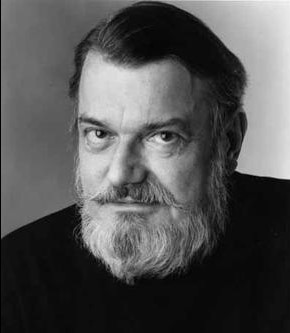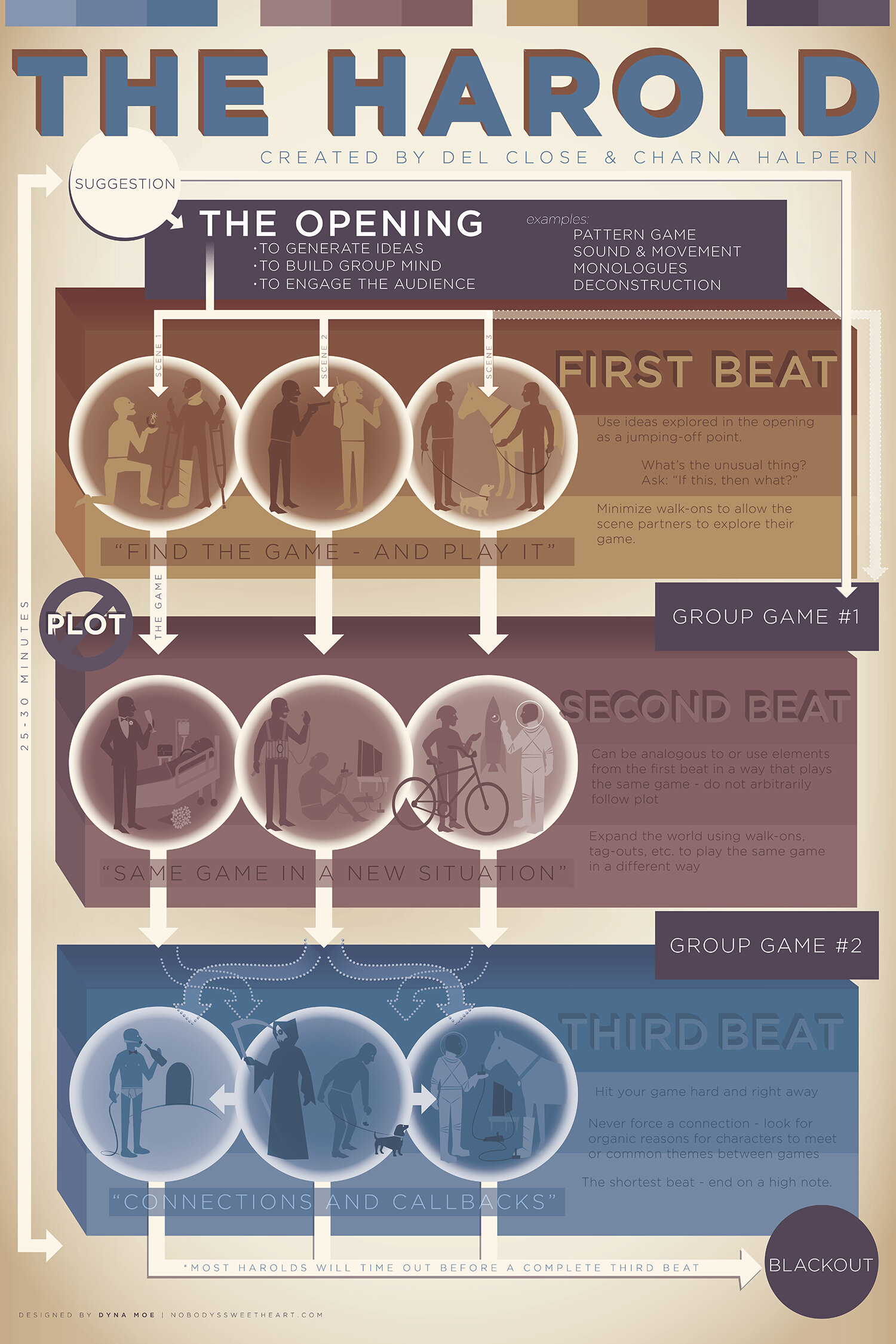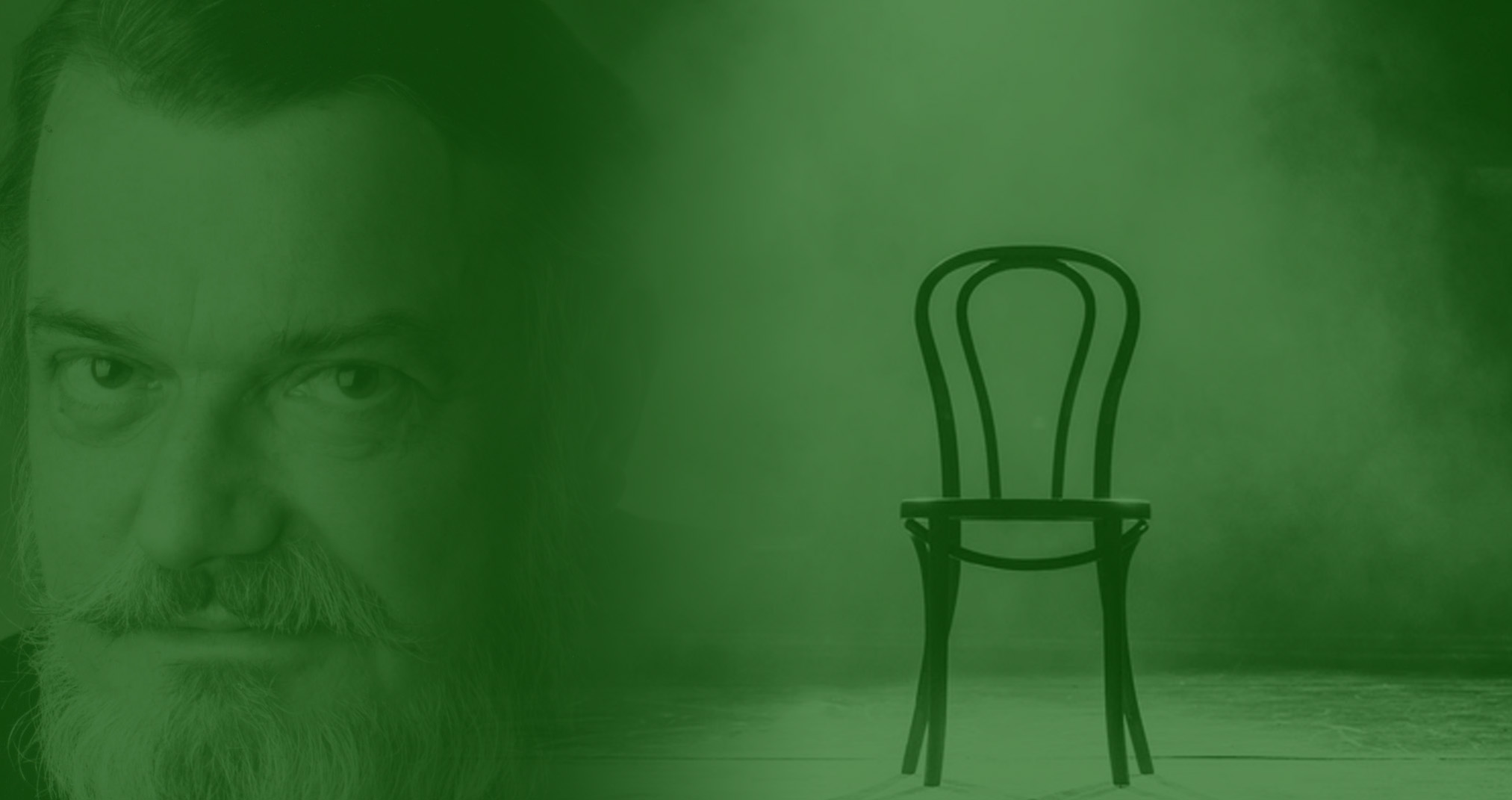On the Mount Rushmore of improv comedy, names like Bill Murray, Tina Fey, Robin Williams, and others have earned their faces chiseled in stone for the ages. If there’s a Mount Rushmore of those who helped shape these improv stars, among them would certainly be the legendary Del Close.
As a pioneer in the art and practice of improv, Del is largely credited with originating the popular improv structure and performance piece known as “The Harold”. His indelible cultural impact on the modern improv scene in Chicago and around the world has seeped into pop culture and cemented his legacy as one of the most influential founding members of modern improv comedy alongside names like Viola Spolin, Mike Nichols, and Elaine May.
On the Mount Rushmore of improv comedy, names like Bill Murray, Tina Fey, Robin Williams, and others have earned their faces chiseled in stone for the ages. If there’s a Mount Rushmore of those who helped shape these improv stars, among them would certainly be the legendary Del Close.
As a pioneer in the art and practice of improv, Del is largely credited with originating the popular improv structure and performance piece known as “The Harold”. His indelible cultural impact on the modern improv scene in Chicago and around the world has seeped into pop culture and cemented his legacy as one of the most influential founding members of modern improv comedy alongside names like Viola Spolin, Mike Nichols, and Elaine May.

Who The Heck Was Del Close?
From his Midwestern roots in Kansas, Wisconsin, and Missouri, Del Close found his first pivotal stint in the improv scene as part of The Compass Players in St. Louis. It was here he befriended the legendary Mike Nichols, and Elaine May and moved with them to New York City in 1957 where he developed his voice in stand-up comedy, Broadway musicals, and, of course, improv.
Early life and career of Del Close.
In 1960 he headed back to the Midwest and the budding comedy scene at The Second City improv comedy theater in Chicago, Illinois. It was here he took up residency and began to find his calling as an improv comedy instructor and mentor, but was abruptly fired from the troupe within a few years. As it turned out, this was a guised blessing for the history of improv as he found himself in Northern California as house director of improv ensemble The Committee. It was here he built his philosophy that “The truth is funny” and emphasized honesty and collaboration in comedy as he worked with his students to develop a curriculum he would later use to mentor many of our favorite comedians, writers, and directors.
The Birth of “The Harold”
The origins of The Harold are actually as improvisational as the structure itself. It’s widely believed to have been first performed by The Committee in California during Del Close’s stint away from The Second City. Legend has it that after a show, the performers were brainstorming a name for what they had just created. From the back of a Volkswagon van, someone shouted, “Harold!”—a playful nod to a scene in A Hard Day’s Night where George Harrison jokingly names his haircut “Arthur.” Thus, the name of this iconic improv format was born, as delightfully random as the performances it inspires.
From its California roots, The Harold spread through the improv world, influencing legendary troupes like The Groundlings in Los Angeles and The Old Spaghetti Factory in San Francisco. Eventually, it found a lasting home at Chicago’s iO Theater (formerly ImprovOlympic), where Del Close, alongside Charna Halpern, refined and popularized it. Today, The Harold remains a cornerstone of improv education and performance where it continues to inspire new generations of performers.

*Art by Dyna Moe.
In its most basic form, The Harold ‘structure’ could be described as having the entire group come together at the top of the show to explore a single audience suggestion in various ways in order to comes up with a general “theme” of the show in what is referred to as “The Opening”.
This is then followed by 3 improvised scenes that contain characters and storylines inspired by the overall theme of the show that was generated in the “Opening”. All three of these scenes together are one “performance segment” of the show, which in improv lingo are called “beats”. In this case, all three scenes are considered the “first beat” of the Harold.
After those three scenes (“first beat”), the group comes together again on stage to continue to explore the theme of the show in various ways, like a mini-performance within the show. Because this is always something fun to do as a group, like playing a game with your friends, it was aptly called a “Group Game” in the Harold.
A Harold typically includes three “beats” and two “group games”. In the second and third “beats”, scenes and elements from earlier should begin to connect and intersect and culminate in a series of callbacks to earlier characters or storylines. Believe us, it’s much more enjoyable to see it in a live show than to read about it here.
Why Is Chicago The Improv Capital?
The rich history of Chicago as the birthplace of modern improv begins with the theater games of Viola Spolin in the early 1960’s. Viola was an influential acting coach for The Compass Players on the campus of the University of Chicago, and is credited with forming the modern foundation of improv as we know it. Her lessons had students approaching scenes through improvisational movement instead of simply reciting lines. The result was a more fluid display which allowed the performers to act with their whole selves (mind, body, & spirit).
Chicago offered a unique environment for improv to grow with the many esteemed educational institutions where free-thought and expression flows. While other improv theaters and troupes were finding their footing elsewhere, Chicago’s offered a supportive ecosystem where instead of competition, theaters helped nurture the art form and shared ideas. Theater houses like The Second City, iO Theater, and Annoyance Theatre were founded in Chicago and became the backbone of improv comedy and helped cement Chicago’s status as the capital of long-form improvisation where people from all around come to learn and to practice it.
Improv in Pop Culture
Improv has an undeniable position and influence on today’s television and film. Improv-trained comedians, many who trained in Chicago, dominate on shows like the decades of not-ready-for-prime-time players on Saturday Night Live, The Office, Parks and Recreation, and 30 Rock, to name a few.
Improv has a huge influence on many of our favorite movies behind and in front to the camera from people Adam McKay, Judd Apatow, Kay Cannon, Jon Favreau. and perhaps most notable, we see the use of improvisational techniques in the genius works of Christopher Guest mockumentaries like Best in Show and Waiting for Guffman where the dialogue is entirely improvised with only a loose scene outline in place for the actors.
Improv In Scriptwriting
The spirit of “The Harold” as a structured comedic live theater show extends into television shows and movie productions to leave space for improvisation within a well-formulated script or outline. Without this space for inventiveness, a rather predictable and formulaic feel comes through in sitcoms or certain film genres (action, comedy, horror, etc.).
Writers with improv backgrounds break this mild and bring spontaneity and collaborative energy to scripts, leading to dynamic dialogue and character interactions.
Experiencing “The Harold” Today
Today, “The Harold” continues to push the boundaries of comedic storytelling and shape pop culture from Hollywood to our everyday lives. Come experience the fun of an improv show and the exhilaration of an improv class or workshop firsthand at The HOME Comedy Theater, Chicago’s newest improv comedy theater and school.
“Where do the really best laughs come from? Terrific connections made intellectually, or terrific revelations made emotionally.” – Del Close
Want to learn more about the art of improv? Read more in Yes, And… Everything You Need to Know About Improv Comedy.
